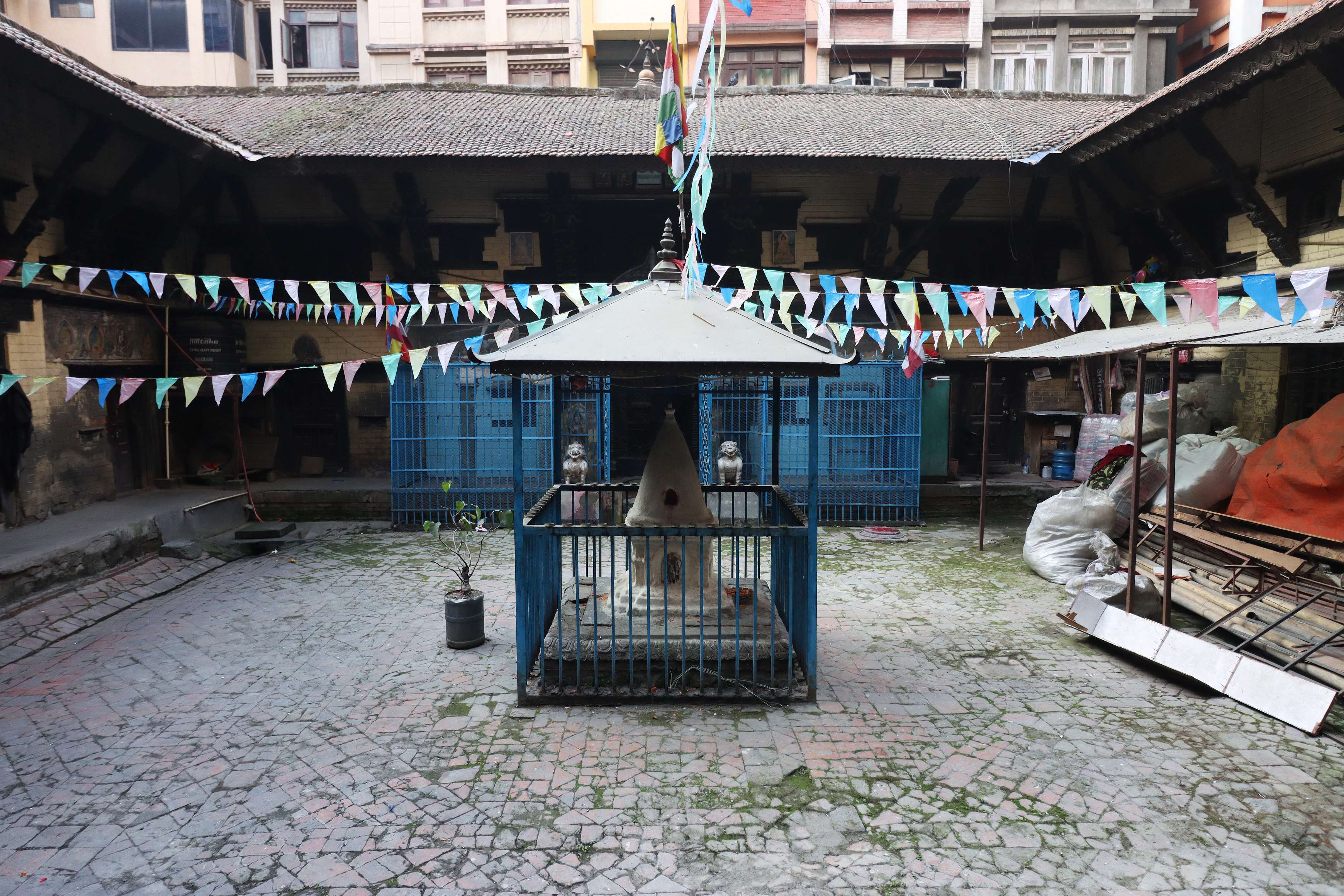Pinchẽ Bāhāḥ, Vaṭu Ṭola, Kathmandu
Curated by Rajan Khatiwoda

Pinchẽ Bāhāḥ (also known as Khũ Bāhāḥ, DANAM ID: KAT1400) is one of the very few monastic buildings in Kathmandu of which its historic structure could be retained. This branch (kacābāhāḥ) of Taḥdhaṃ Bāhāḥ (KAT1420), situated in Vaṭu Ṭola, was founded by a resident of Taḥdhaṃ Bāhāḥ in 1593 CE (NS 713), during the reign of King Śivasiṃha Malla. The main building or God House (dyaḥchẽ) is north facing and has wings that branch out to the west, north, and east. The monastery’s esoteric room (āgaṃ) is located on the first floor of the dyaḥchẽ, the sanctum, holding a stone statue of the site’s main deity (kvāḥpāḥdyaḥ) Akṣobhya, is located on the ground floor. As it is common practice, a wooden toraṇa is placed above the main entrance to the sanctum. Erotic carvings can be found on the struts that support the roof of the northern façade of the courtyard, something exceptional for a bāhāḥ. During the Rāṇā period, Pinchẽ Bāhāḥ was converted into a prison, thus also being names as the Khũ, the monastery of thieves (cf. Locke 1985, p.352). The Nepal Heritage Documentation Project is dedicated to documenting such unique cultural places in the Kathmandu Valley and beyond, and to contributing to their preservation via systematic documentation. More details on this bāhāḥ can be found here.
